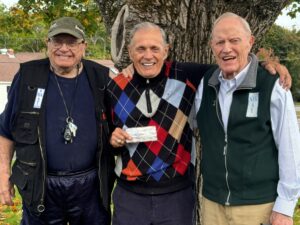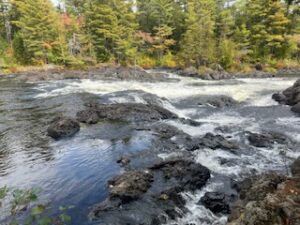
Take a good look at the photograph above. Do you recognize the location? Can you make out the fire ring in the left foreground? It may be slightly difficult to identify, but this is the Wassataquoik lean-to under a blanket of 34” of powdery snow at Katahdin Brook on the IAT just west of Katahdin Lake. The lean-to is located on land owned by Elliotsville Plantation, Inc. (EPI) and I had the opportunity to visit the site on February 29th during routine biological monitoring work.
As a biologist at Sewall, the winter months are a great time of year for me to document the presence of a variety of wildlife on EPI lands without ever seeing the animal. When I stopped at the lean-to that day, I was conducting a snow-track survey for Canada lynx, listed as a threatened species under the U.S. Endangered Species Act. In order to efficiently cover many miles in a single day, we use snowmobiles to traverse the property. On the day I took this photo, I documented tracks made by lynx, moose, coyote, mice, ermine, snowshoe hare, red squirrel, fisher, river otter, and ruffed grouse. So the next time you’re recreating in the snow, or even walking to your car on the way to work, think twice about that track you see in the snow, however small or large it may be. Then ask yourself what made the track, when was it made, and why was it made, and think about the adaptations and preparations that allow wildlife to spend their winters in such harsh climates.
If you’re curious about how to identify animals based on their tracks, check out your local land trust, refuge, or conservation organization, which often offer programs to the public for little or no cost to participants.
Sarah Spencer



